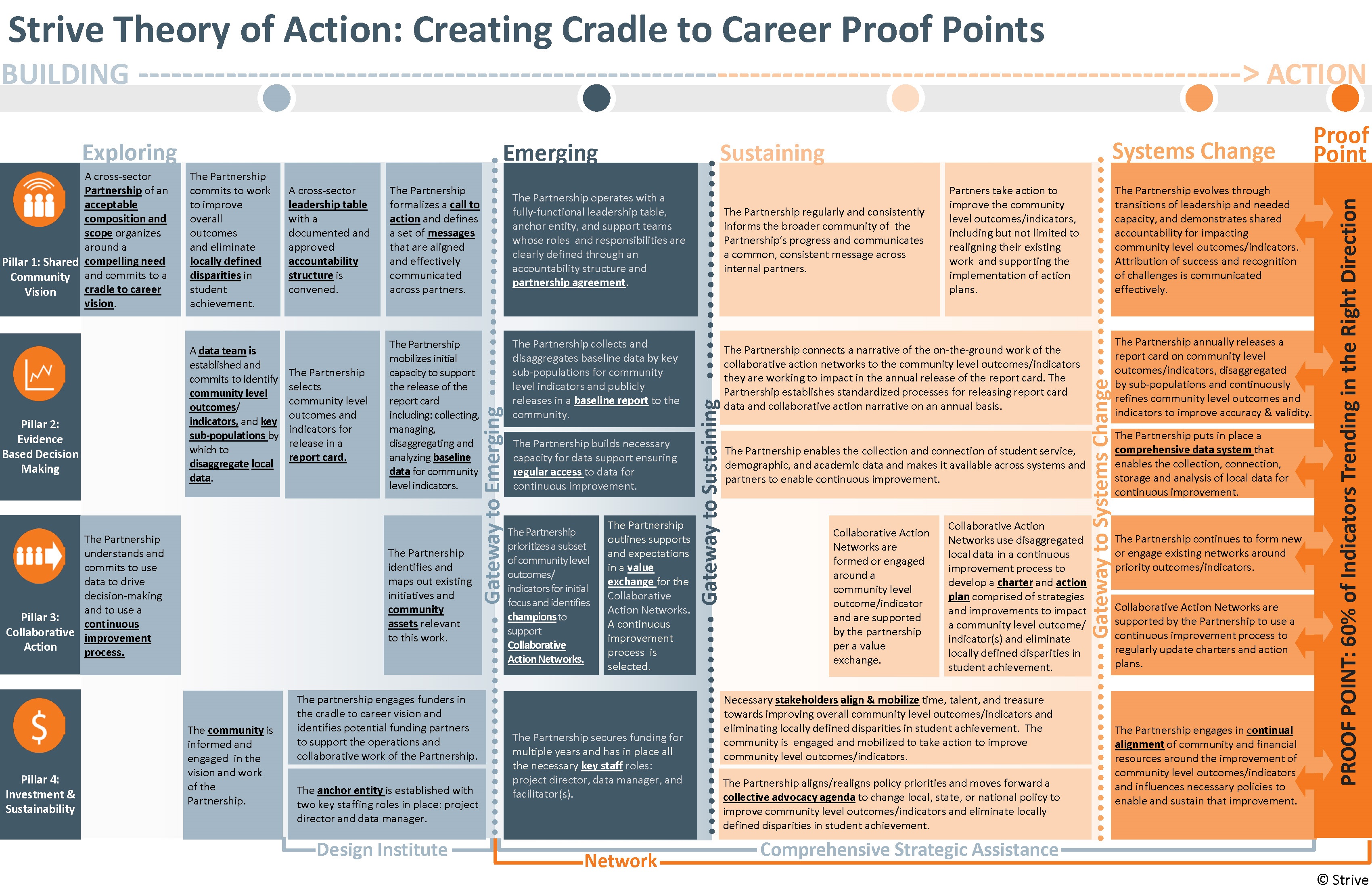At the end of September, Susan [Sullivan] and I flew to Milwaukee, Wisconsin to attend the Strive Network 2012 Cradle to Career Network convening. We hadn’t realized when we scheduled the trip that our visit would follow only five days after Seattle’s controversial win over the Packers on Monday Night Football – those replacement refs were NOT the most popular folks in the state!
Eastside Pathways in Bellevue is one of 70 communities in the Strive Network around the U.S. and Canada that are qualified as “emerging” according to the Strive Site Readiness Assessment – communities that have committed to and made progress in the areas of shared community vision, evidence-based decision making, collaborative action, investment, and sustainability. Of those, 62 were represented in Milwaukee.
The theme of the Strive Network conference this year was “Moving from Proving to Improving – Data as a Foundation for Community Impact.” The basic idea is that we’ve moved beyond whether to adopt collective impact and are focusing on how to best use that approach to move the needle in important outcome areas.
A major focus was highlighting successful practices from communities that have implemented the collective impact model. These examples ranged from individual tactics, such as successfully deploying a kindergarten readiness tool in Santa Barbara, to assessments of global progress, highlighted by Strive in Cincinnati’s increase of the percentage of indicators moving in a positive direction from 68% to 82% in 3 years.
Jeff Edmondson, who leads the Strive Network, emphasized the need for rigor in applying the Collective Impact model. There is a risk, he pointed out in his keynote, that the approach gets watered down by applying the term to any collaborative action. The key elements, including a shared community vision, cross-sector involvement, broad community engagement and especially using data for continuous improvement, are critical for delivering on the model’s promise.
For me, the key benefits of attending this event are the chance to connect with peer communities that can share successful approaches to shared challenges. For example, the host city’s effort – Milwaukee Succeeds – held a session on engaging business partners to further the work. Some of the highlights – “Six Sigma” quality specialists from local manufacturing leaders served as leads for group work around continuous improvement. And companies encouraged employees to volunteer as reading tutors by rewarding them with an incremental vacation for a year’s commitment.
In all, the sense from the visit was one of cautious optimism. There are no shortcuts or easy remedies to improving outcomes for kids. But for communities committed to that goal, there is ample evidence that Collective Impact promises to provide a means to harness that energy toward promising results.
Written by Bill Henningsgaard, Eastside Pathways Executive Director.

